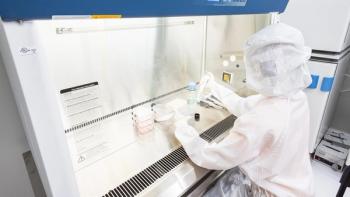
Standardization is needed in CAR-T cell therapy development due to its inherent complexity.

Standardization is needed in CAR-T cell therapy development due to its inherent complexity.

The author introduces a practical approach to determining the best estimate of probability for passing multiple stage dissolution tests.

Performing corrective action and preventive action (CAPA) activities is often necessary to investigate a manufacturing deviation and prevent it from reoccurring. Pharmaceutical Technology asked Joe O’Gorman, head of Global Operations at LZ Lifescience, a Cognizant Company, about the role technology plays in performing CAPAs.

Data may be used to improve (or remove) a corrective action/preventive action.

Quality metrics and more domestic production aim to avoid supply disruptions and drug shortages.

Experts Susan J. Schniepp, distinguished fellow for Regulatory Compliance Associates, and Steven J. Lynn, executive vice-president, Pharmaceuticals for Regulatory Compliance Associates, discuss the verification of compendial methods.

Any improper validation of methods is likely to result in regulatory agency deficiencies that range in degree of severity.

Testing cleanroom garments while in use and during daily cleanroom operations is vital for contamination control.

The importance of getting buy-in from regulatory authorities early in the development process is critical in order to establish meaningful specifications.

Experts weigh in on the current state of computer validation and its role in the greater regulatory landscape.

A consensus-based approach to GDP lies at the heart of a new industry-wide program seeking to rationalize, standardize, and harmonize the adherence to pharma transportation norms and regulatory guidelines.

Auditors must have access to the batch records of the activities they are reviewing, says Siegfried Schmitt, vice president, Technical at Parexel.

Training is crucial for supporting GMP operations in commercial-scale bioprocessing.

Susan J. Schniepp, distinguished fellow at Regulatory Compliance Associates, details regulatory requirements for developing a quality manual.

As Europe moves closer to implementation of ISO IDMP standards, the bio/pharma industry is accelerating efforts to manage its data and documents more effectively.

The company is voluntarily recalling one batch of Semglee prefilled pens because of a potential missing label.

The company is voluntarily recalling one lot of Senna Syrup 8.8mg/5mL, unit-dose cups because of microbial contamination.

Particle analysis provides assurances of the quality and performance of the final dosage form in pharmaceutical development.

Sample preparation tends to be manually labor intensive, but automating this step helps streamline the glycosylation monitoring workflow.

Persistent bottlenecks in biocatalyst development can be alleviated through fully automated enzyme analysis.

Continued process verification for a cleaning validation program begins once the validation study is complete.

As regulators balance pandemic tasks and rethink procedures, quality at manufacturing facilities is still a priority.

Siegfried Schmitt, vice president Technical at Parexel, discusses the difficulty of operating non-GMP and GMP quality systems in the same facility.

The authors introduce the idea of asymmetrical tolerance intervals as an aid in fully assessing product performance relative to product or process requirements.

Particle analysis is a critical component of pharmaceutical development, providing assurances of the quality and performance of the final dosage form.